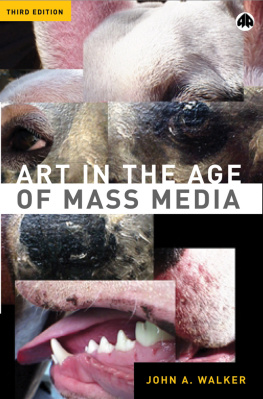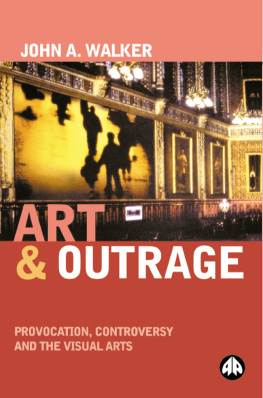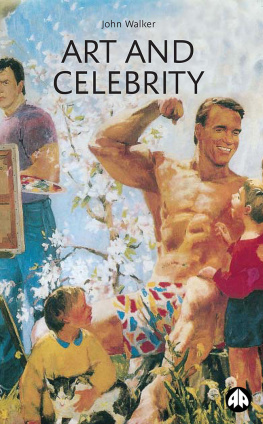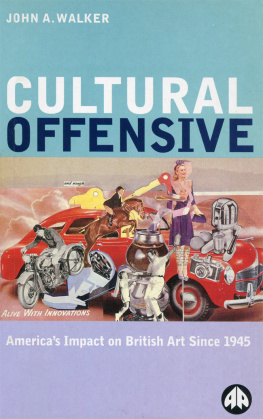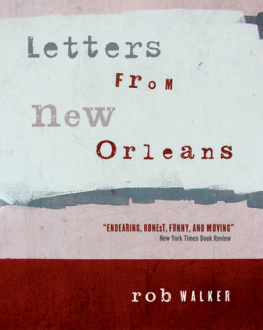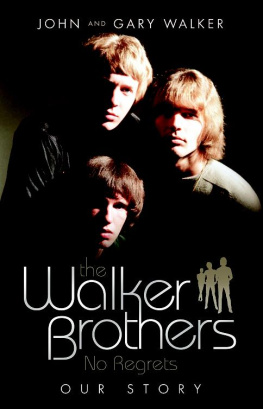ART IN THE AGE OF MASS MEDIA
Also by John A. Walker and published by Pluto Press
ART AND OUTRAGE
CULTURAL OFFENSIVE
DESIGN HISTORY AND THE HISTORY OF DESIGN
ART IN THE AGE OF MASS MEDIA
Third edition
JOHN A. WALKER
First published 1983 by Pluto Press
345 Archway Road, London N6 5AA
Second edition published 1994
Third edition published 2001
Copyright 1983, 1994, 2001 John A. Walker
The right of John A. Walker to be identified as the author of this work has been asserted by him in accordance with the Copyright, Designs and Patents Act 1988
British Library Cataloguing in Publication Data
A catalogue record for this book is available from the British Library
Library of Congress Cataloging in Publication Data applied for
ISBN 9780745317458 hbk
ISBN 0745317456 hbk
ISBN 9780745317441 pbk
ISBN 0745317448 pbk
ISBN 9781783718924 ePub
ISBN 9781783718931 Kindle
Printed and bound by Antony Rowe Ltd, Eastbourne
CONTENTS
PREFACE TO THE THIRD EDITION
For this third revised edition, I have corrected a few factual errors and substantially expanded the final chapter to describe developments since the second edition was completed in the early 1990s. The bibliography has also been updated. For information and illustrations supplied, particular thanks are due to Benetton and Modus Publicity, the GALA Committee, Grand Arts, Kansas, Graham Harwood of Mongrel, Peter Hill, Jenny Holzer, Alison Jackson, Simon Lewandowski, Derek Manley, Tony Mann of Greenwich University and Jamie Wagg.
John A. Walker,
Greenwich, London
2001
ACKNOWLEDGEMENTS
Thanks are due to all the artists, galleries and organizations who kindly supplied photographs for illustrations. Sources and credits are given in the captions. While every effort has been made to trace copyright holders, the publisher would be glad to hear of any omissions.
lites and ruling groups have always sought to distinguish themselves from others by the possession of objects which symbolise their superior status.
Keith Thomas, Observer 7 March 1993, p. 58.
Both avant garde art and mass culture bear the stigmata of capitalism, both contain elements of change Both are torn halves of an integral freedom, to which, however, they do not add up.
Theodor Adorno, letter to Walter Benjamin, 18 March 1936. Aesthetics and Politics (London: NLB, 1977), p. 123.
If the artist is not to lose much of his ancient purpose he may have to plunder the popular arts to recover the imagery which is his rightful inheritance.
Richard Hamilton, Collected Words 195382 (London: Thames & Hudson, 1982), p. 42.
Im for the artist to regain the responsibility for manipulation and seduction: for art to have as much political impact as the entertainment industry, the film, the pop music and advertising industries.
J. Koons, The Jeff Koons Handbook (London: Thames & Hudson/Anthony dOffay Gallery, 1992), p. 33.
INTRODUCTION
For many centuries, up until the mid nineteenth century, architecture, painting and sculpture were the three principal visual arts of Europe. These arts flourished because they received substantial patronage from the most powerful and wealthy individuals, groups and institutions within European society, that is, kings, princes, aristocrats, the Church, merchants, national governments, city councils and guilds. Today the situation is very different: our culture is not dominated by the fine arts but by the mass media. Changes brought about by the industrial revolution, by the development of a capitalist economic system, and by the emergence of an urban, consumer society, have irrevocably altered the social context in which fine arts operate. Architecture, it should be acknowledged, has been far less affected by these changes than painting and sculpture.
Machines of various kinds have played a crucial role in this social and technological transformation. Until the advent of colour photography and printing, for example, painters enjoyed a virtual monopoly over the production of coloured images. Now millions of high-quality colour images, and millions of copies of those images, can be simply and rapidly generated by the use of the camera and the printing machine. The art of painting has not died out as a result but, arguably, there has been a decline in its status and power; its social functions have also altered.
This book examines certain aspects of the condition of the fine arts in the age of the mass media; it identifies the differences between these two relatively autonomous realms, but it also discusses the ways in which they interact. (The fact that a line can be drawn between two realms does not prevent two-way traffic across the line from taking place: frontiers exist between countries, but people, goods and information cross them every day.)
Key questions to be considered are: what has been the response of fine artists to the existence of the mass media? How have the mass media made use of the visual arts? Is there any vital social role left for fine art? If so, what is it?
Just because the fate of the visual arts in the age of mass media is the primary concern of this book, readers should not assume that it takes the view that all virtue is on the side of the former and all vice on the side of the latter. In both realms one can find new and creative ideas, old and reactionary ideas, well and badly made artefacts, the aesthetically good and bad.
During the 1970s and 1980s art historians employed in British colleges of art and design were asked to broaden their expertise. Lectures and courses on the history of industrial design, advertising, photography, film, television, video, computer graphics, fashion and youth sub-cultures were required in addition to those already given on painting, sculpture and architecture. This was because they were teaching trainee designers and craftspersons, photographers, film- and video-makers in addition to fine art students. Indeed, art students were a minority. Some of the pressure for the expansion of the art historians object of study was due to the cultural dominance of the mass media. Also significant was the fact that many modern artists had adopted new media technologies photography, film, video, computers in order to make art. As the art historians object of study expanded, seemingly without limit, one question in particular became ever more pressing: what was the relationship between the traditional fine arts and the new mass media? It was not only artists, therefore, who were confronted by the problem of coming to terms with the mass media.
In the event, the task faced by scholars was not simply one of taking on board new subjects such as advertising, but of encompassing the mass mediation of art itself. That is to say, analysts of contemporary art in particular found that they could not limit themselves to the interpretation and evaluation of works of art because they had also to absorb and consider press releases and other publicity material, colour reproductions, catalogue essays, newspaper and magazine reviews, photographs and films of artists, interviews with them, radio and TV arts programmes about them. (What some theorists call the metatextual narrative or discourse.) Some readers may be thinking Surely, compared to the art, such material is secondary, unimportant. Yet, increasingly, this is not the case. As more and more artists realize the crucial importance of the media to a successful career, more and more of them seek to control and manipulate their image and the dissemination of their work through the various channels of communication. As we shall see later, in reference to the American artist Jeff Koons, there is a symbiotic relationship indeed an interplay between his art and his media presence. Salvador Dali and Andy Warhol were two precursors of Koons in this respect. In their application of creativity to self-presentation and self-promotion, fine artists increasingly imitate the behaviour of such mass culture stars as Madonna and Michael Jackson.


